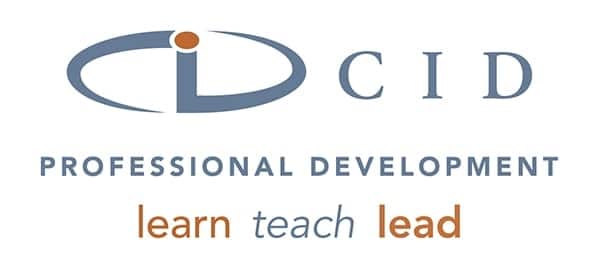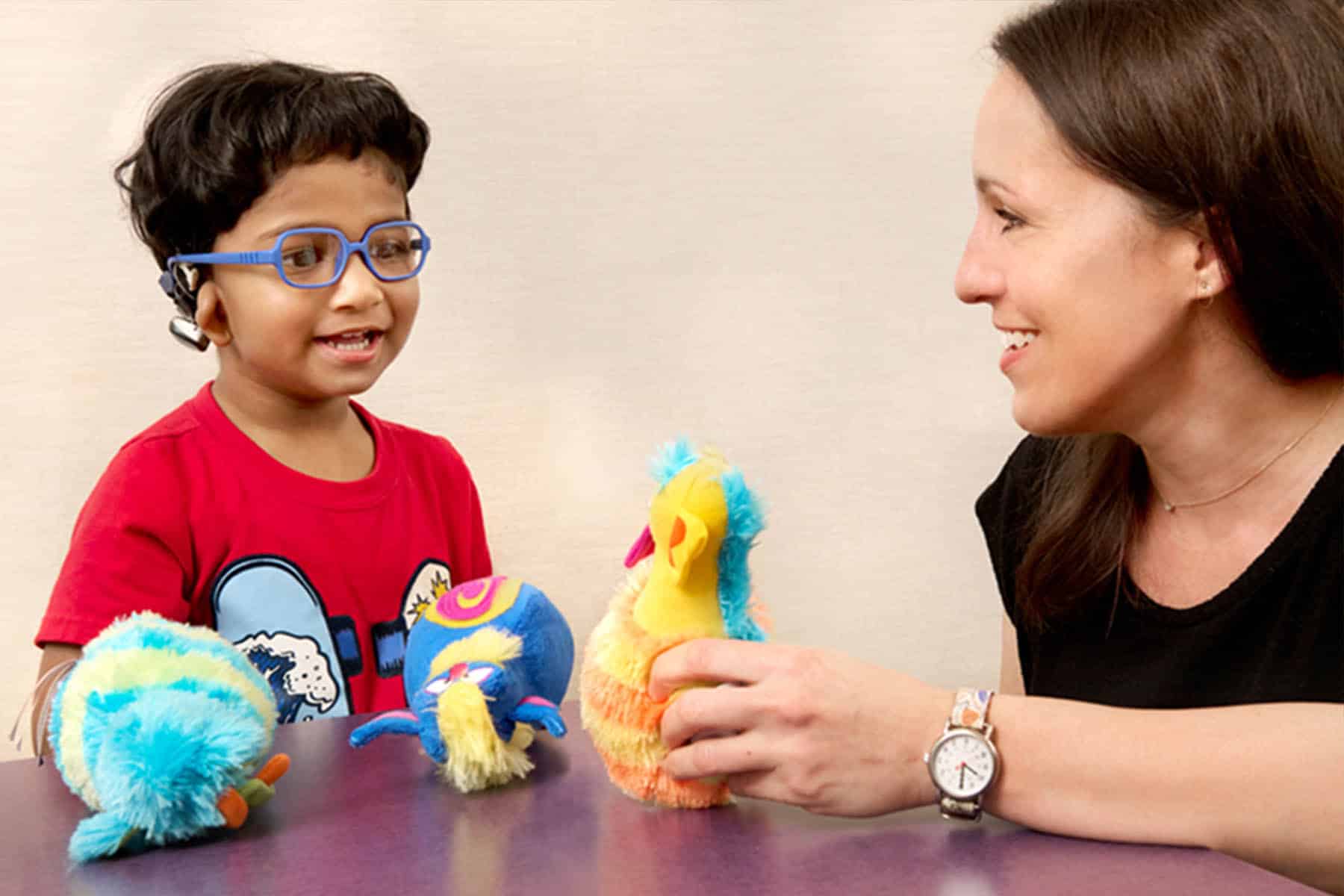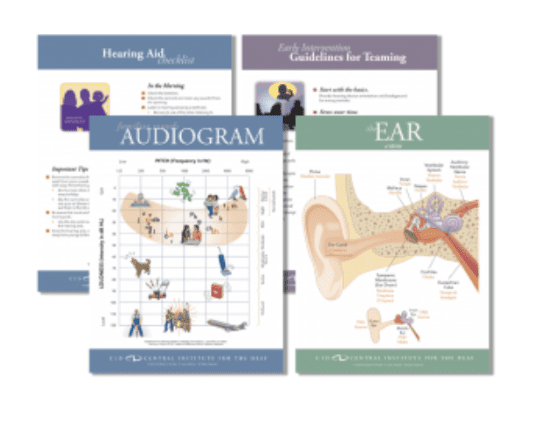May is Better Hearing and Speech Month. In honor of the great work speech-language professionals around the world do, we are bringing you some simple and motivating classroom and therapy ideas. We’ve teamed up with two CID speech language pathologists to highlight items they love to use with their students. Read their answers below to learn about the particular toys they enjoy using!
Greta Bohnenkamp is a SLP at CID who currently conducts individual therapy with two-year olds in the CID Joanne Parrish Knight Family Center.
What is your most used or most coveted item on your shelf?
Right now I am using the Melissa and Doug Caterpillar Gear Toy a lot!
Why do you like it?
It is a great toy for the beginning listener and toddlers. There are six pieces, which can be used for the Ling six sound check. Little hands can easily grasp the pieces, and then match them to the board. Plus it is durable and easy to clean!
What are your goals when using this toy?
This simple toy can be used in a variety of ways…
Ling 6 sound check: The child can hold the toy and put it on the board for detection or I will hold the toy and hand it to them for identification.
Listening for Suprasegmentals: Before we start the listening check, I lift the puzzle “up up up” and then say, “Dooooown” as I tilt the game and let the pieces fall. Then “uh-oh” as we try to find the pieces. After the child puts a piece on the board they can twist the piece and say, “Around and around and around”
Language: Once the routine is in place for the toddlers, this game can add a lot of language opportunities as well. Teaching colors and matching is obviously the intended use, and there is so much more. We hide the pieces for where questions, purposefully forget one for what’s missing, and let the child select two colors for working on and.
Jessica Klein is a CID SLP who currently provides speech and language assessments and intervention to students in the Anabeth and John Weil Early Childhood Center and Virginia J. Browning Primary department at CID.
What is your most used or most coveted item on your shelf?
I love to use simple and motivating games like “Pop-Up Pirate” and “Pop the Pig” during speech, language and auditory training sessions.
Why do you like it?
These games are versatile and are great for using as reinforcers for any goal that I am targeting. Incorporating them into my sessions makes structured tasks that may seem mundane or tedious for students, fun. They can also be used with a variety of ages, are readily available at most stores and are affordable.
What are your goals when using this toy?
I use these games often when doing articulation therapy. I require the student to say their target sound, word or sentence a designated number of times (the more repetitions the better!). After they have completed this, they get to take a turn with the game. I also use these games to reinforce language structures being targeted in class, from simple carrier phrases (e.g., “I want ____” or “my turn”) to more complex structures (e.g., “I will put blue sword in the barrel” or “I want to feed the pig the purple burger”).
These games are also a great way to support pragmatic language skills by working on turn-taking and making requests.
What does a typical lesson with this game look like?
I keep several of these games in my therapy room, and at the beginning of the session I let the student choose which one they want to play. Since the games are all open-ended, whichever game they choose works.
I have picture cards with the target sound or word on the table. I let the student know ahead of time what the expectation is (e.g., “You need to pick a card and say that word 5 times with a good /s/. After you choose 3 cards, you can take a turn with the game.”). Even though the game is a reinforcer, I still require the student to use good speech and language when playing, such as, producing intelligible speech and including all words and word endings in their requests.
Another fun way to use these games is to use the game pieces as tokens. For each good production the student makes, they earn a game piece (e.g., a sword for “Pop Up Pirate” or a burger for “Pop the Pig”). This gives the student a tangible “reward” and also gives them immediate reinforcement for a job well-done.
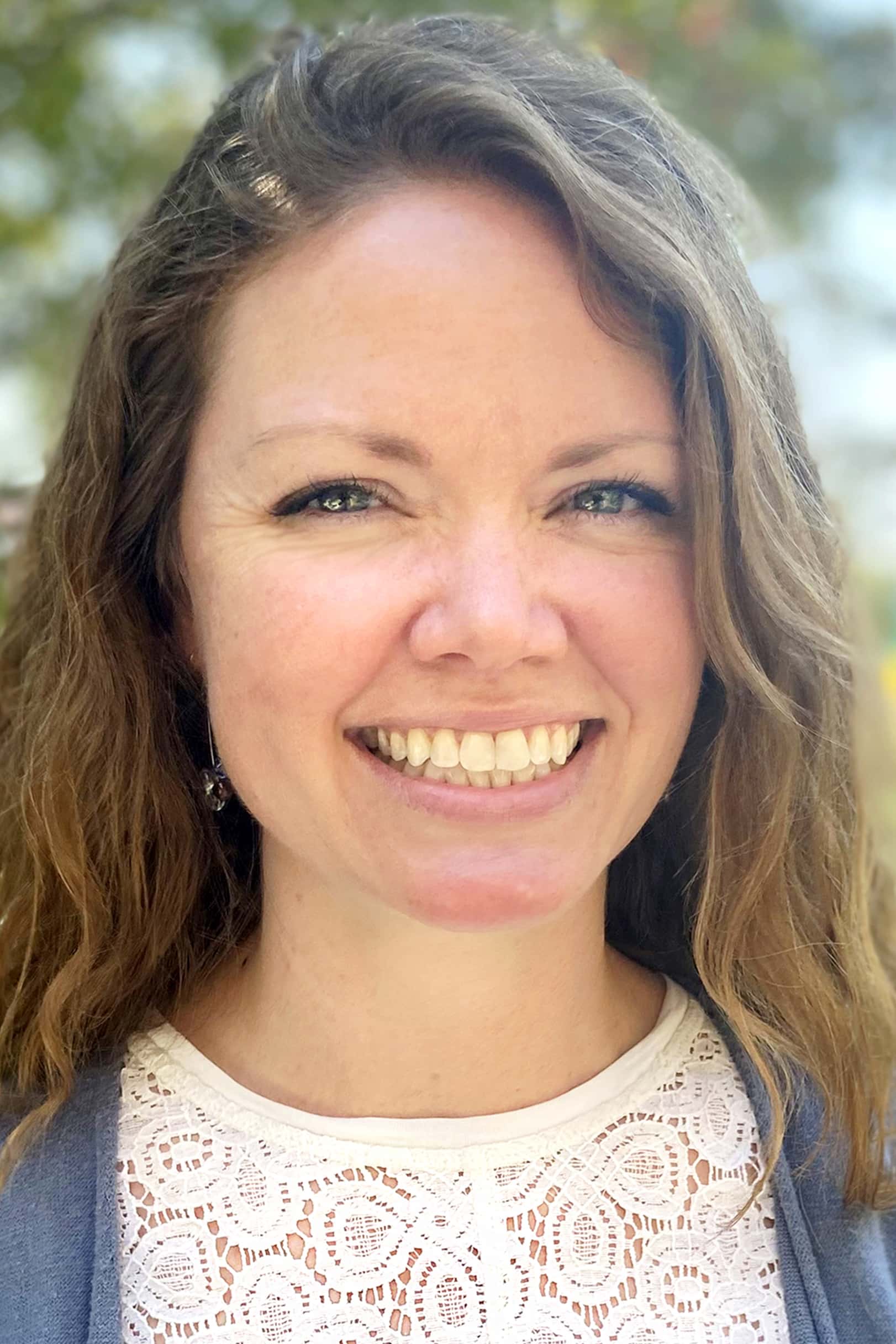
Greta Bohnenkamp is a Speech-Language Pathologist in the Joanne Parrish Knight Family Center at CID – Central Institute for the Deaf. She received her master’s degree in speech-language pathology from Vanderbilt University, during which she participated in a grant focusing on pediatric cochlear implants. Bohnenkamp worked with Preschool and Primary departments at CID for many years, providing speech and language assessments and intervention.
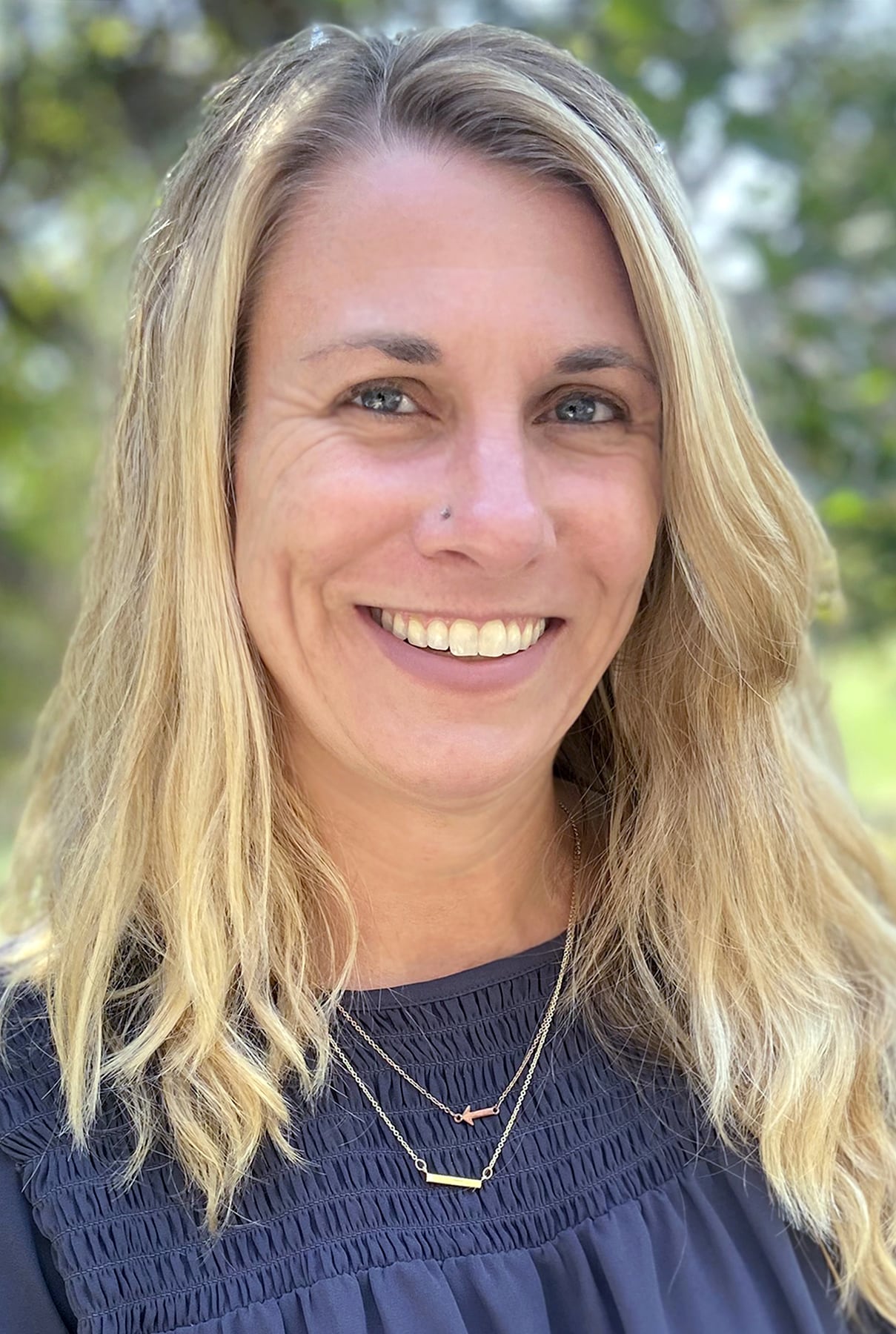
Jessica Klein is a speech-language pathologist. In addition to working at CID, she has worked in a public school setting, serving elementary-age students. Ms. Klein has co-authored several workshops, presented at a variety of professional conferences and written an online course about developing literacy skills in students who are deaf and hard of hearing. Most recently, she co-authored the SPICE for Life Second Edition auditory training curriculum.
